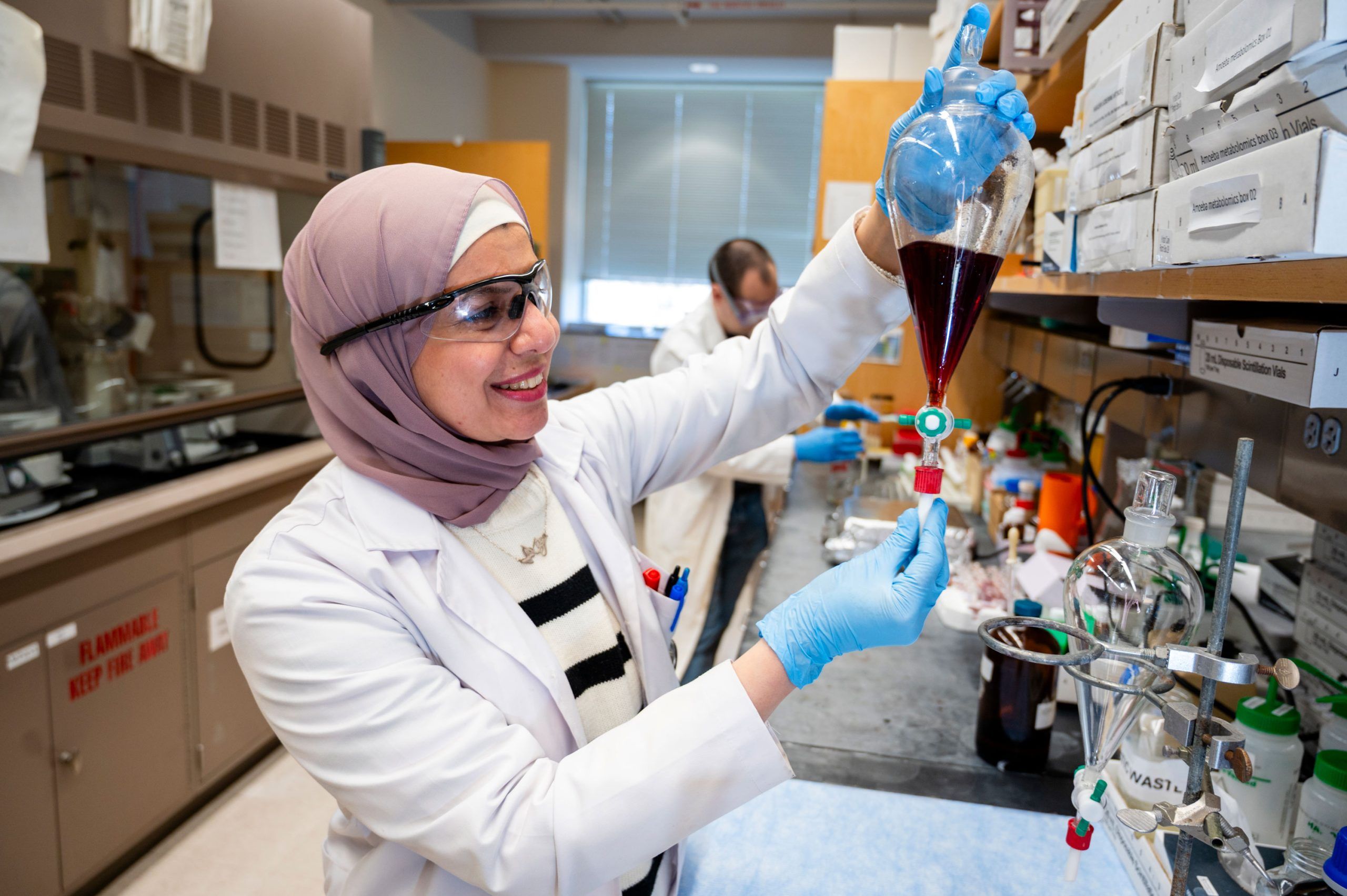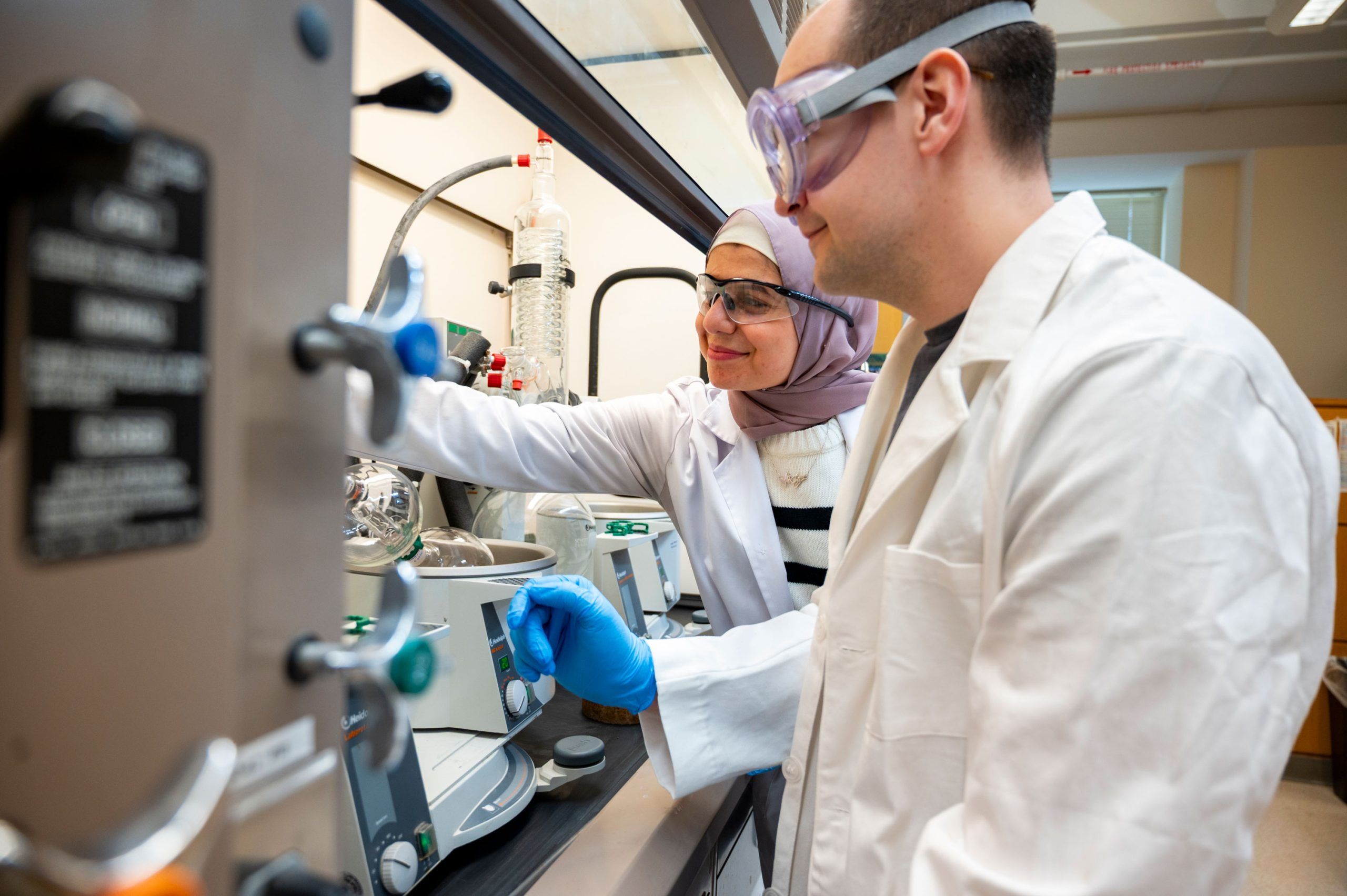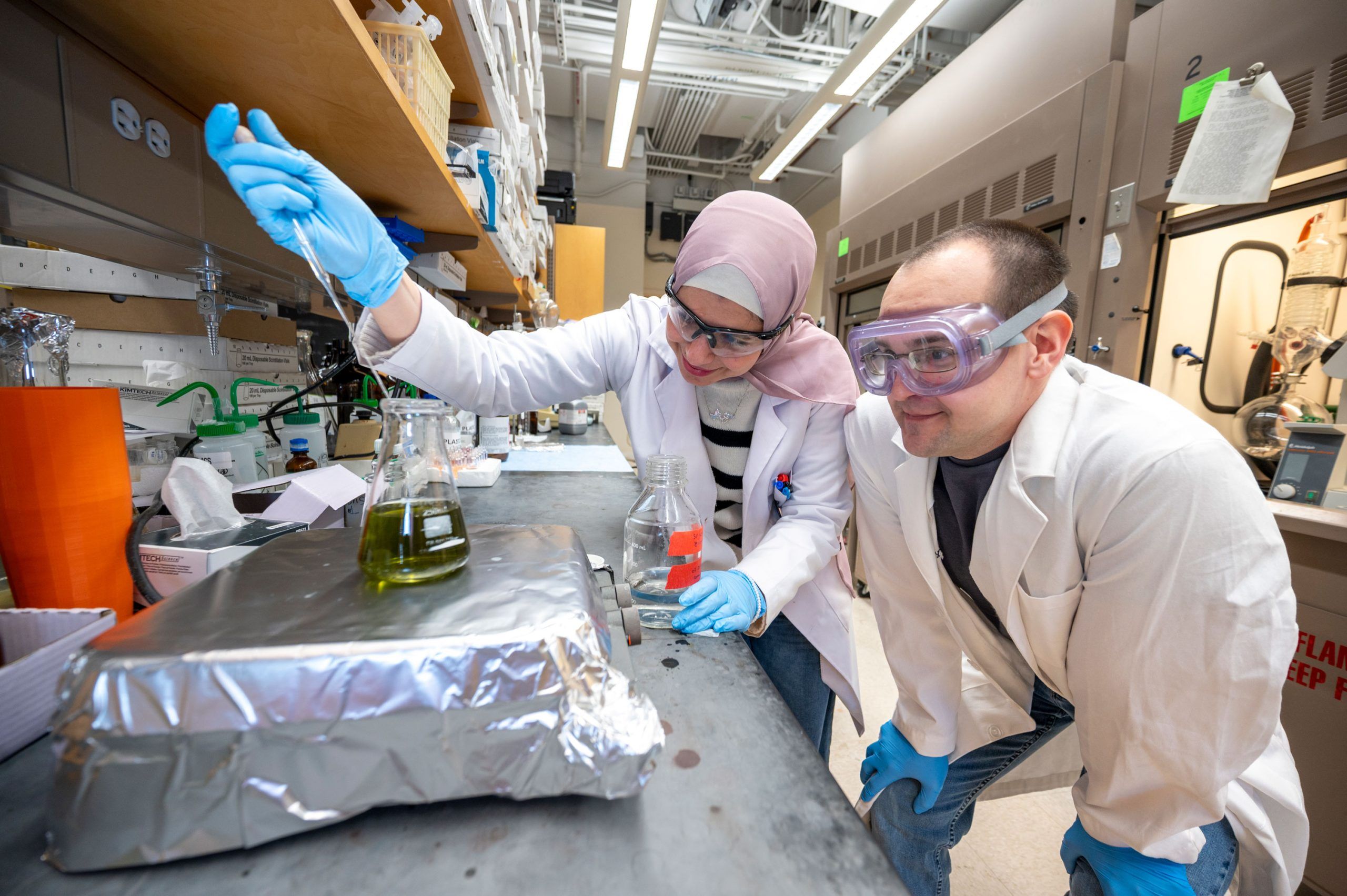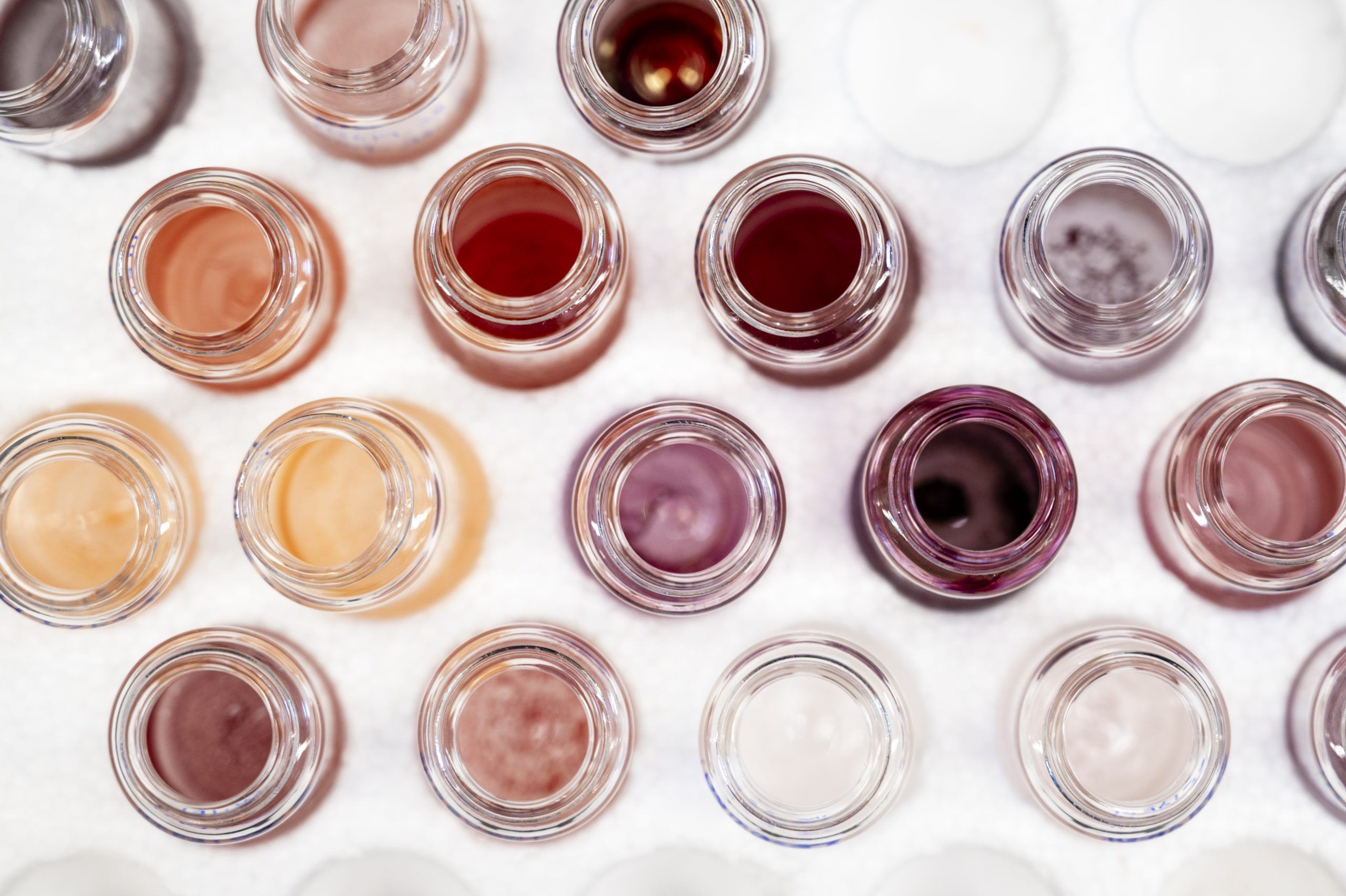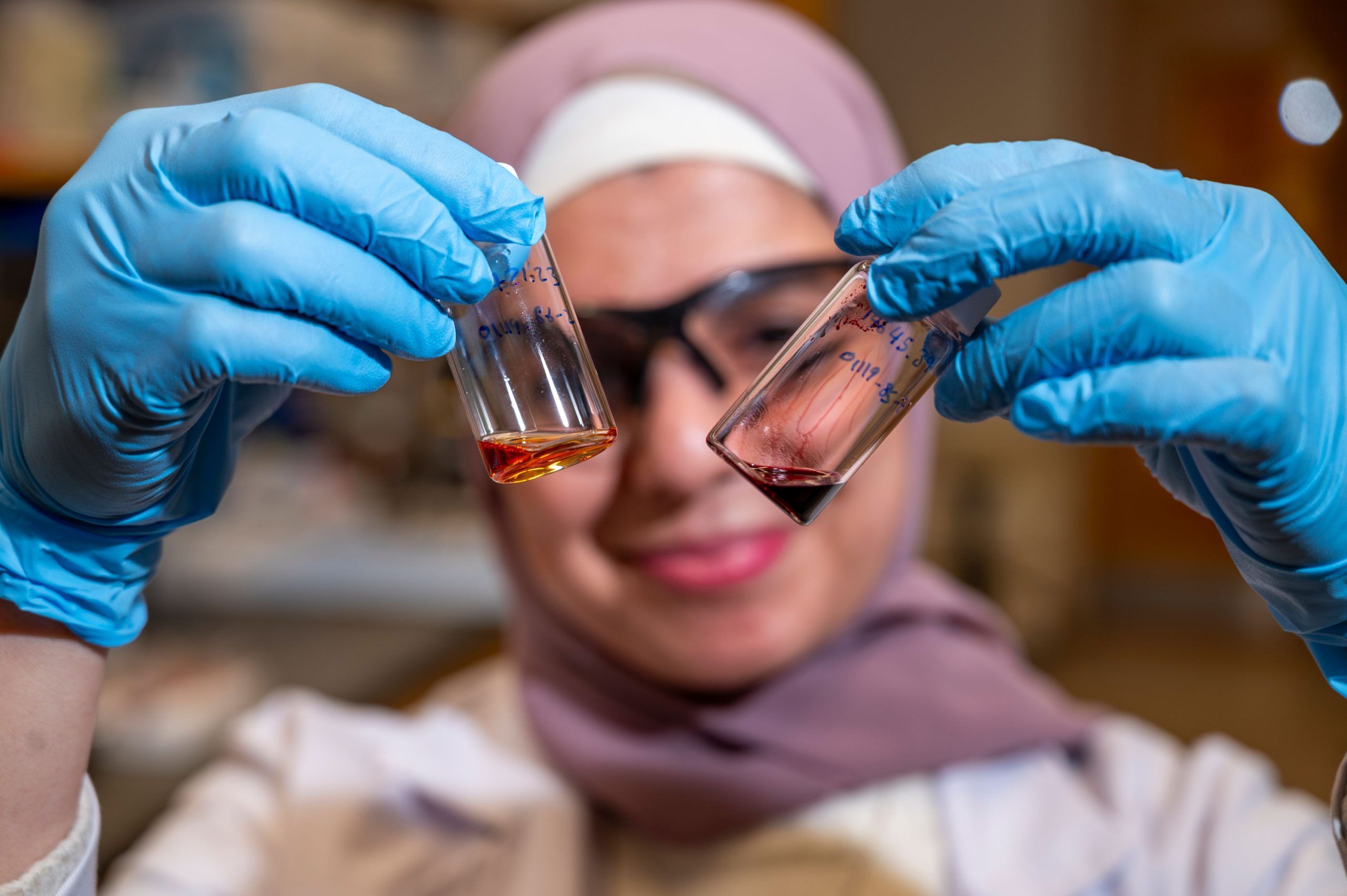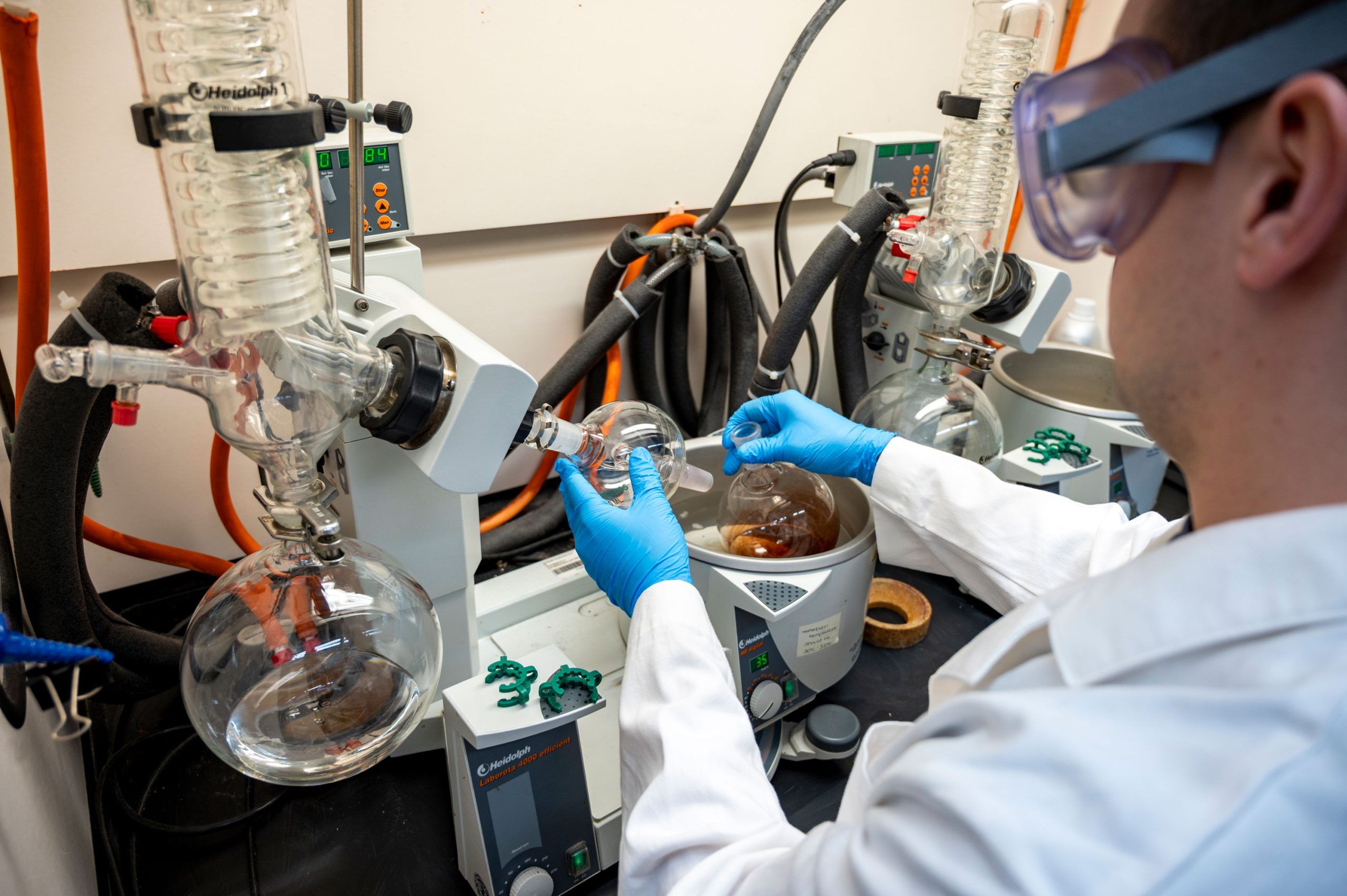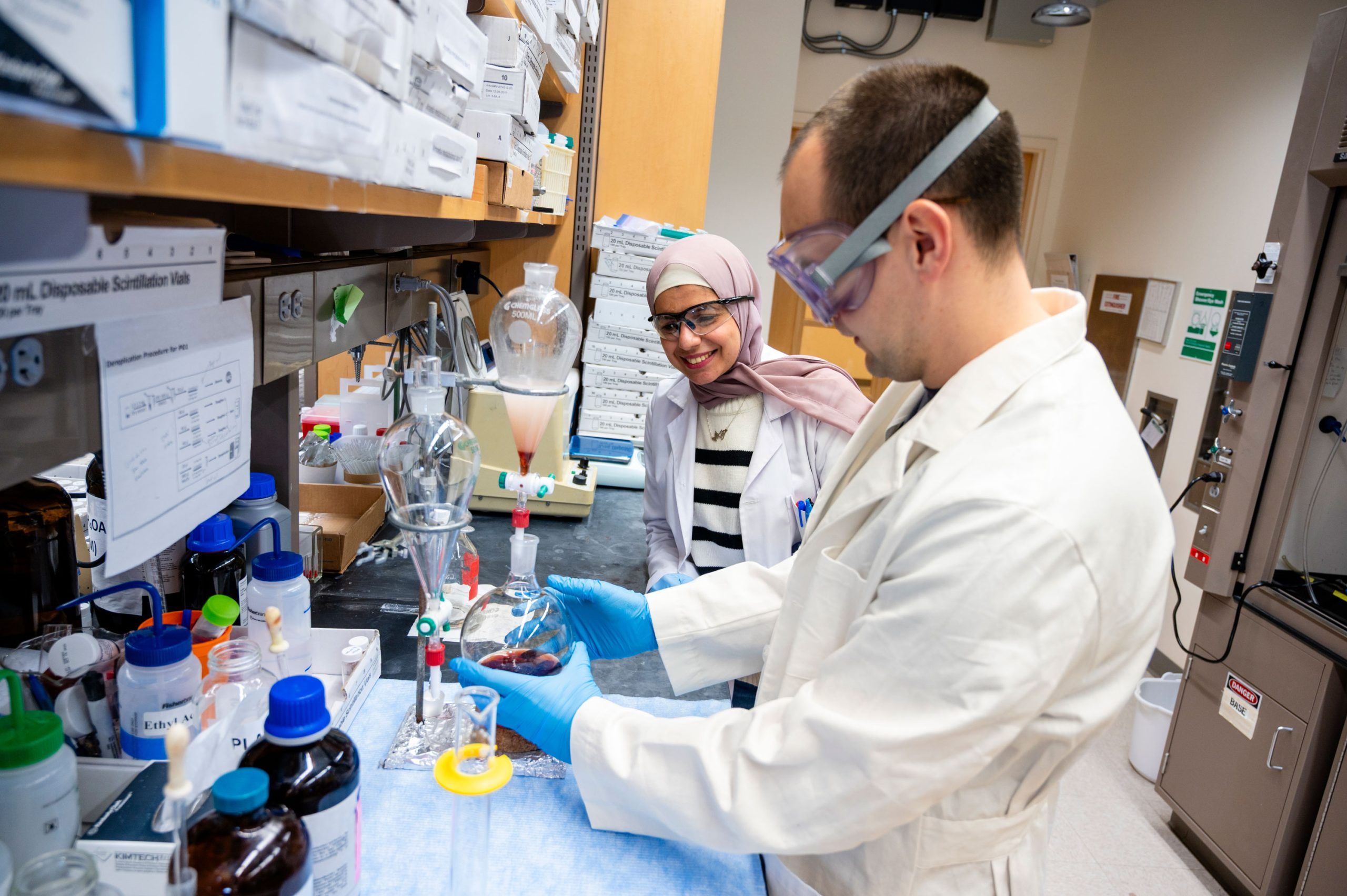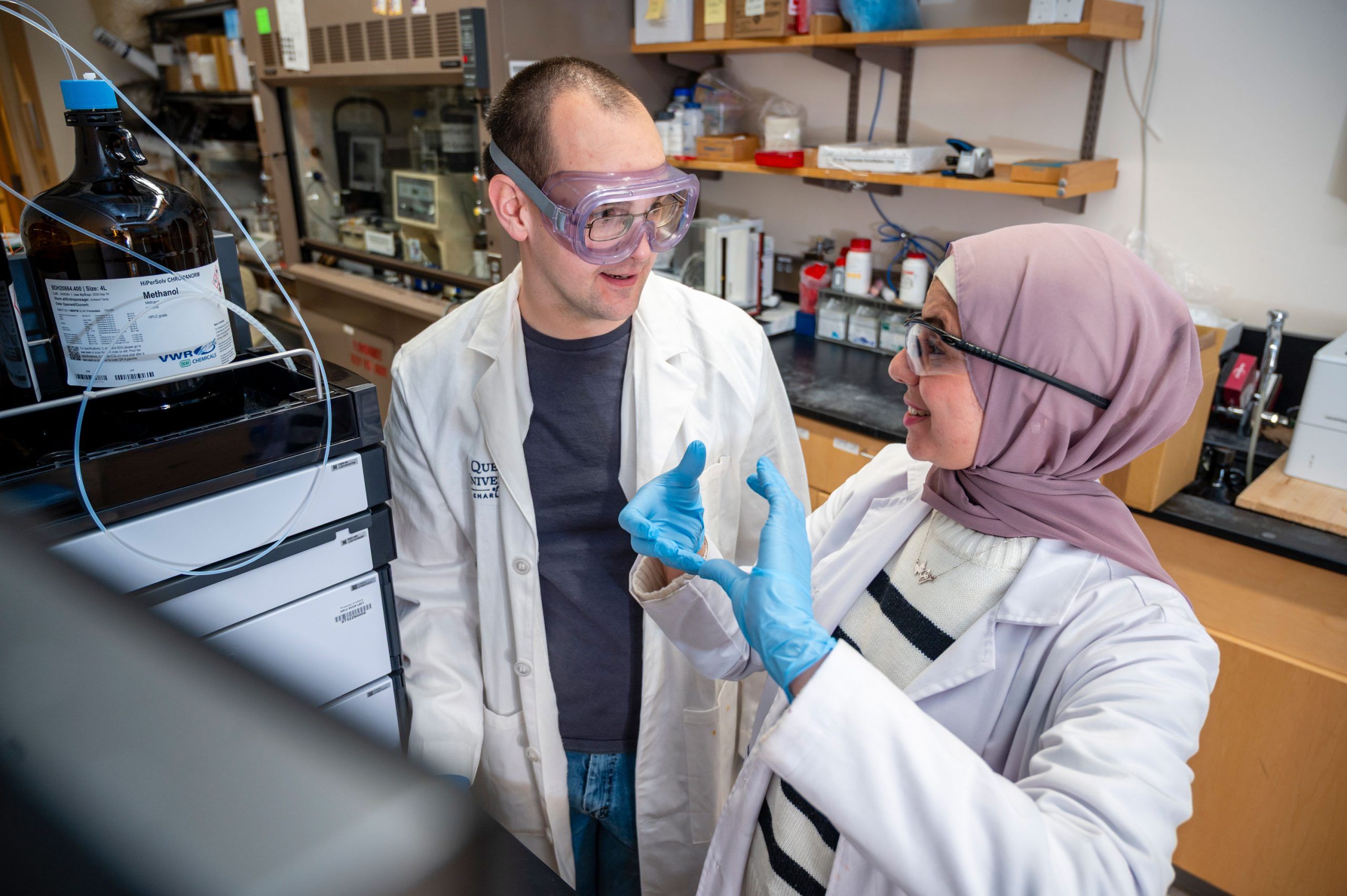Energy for the Environment
A few years ago, Dr. Nick Oberlies’ doctoral student Zeinab Al Subeh made a presentation to the faculty – a part of the graduate student training process in the Department of Chemistry and Biochemistry. They nurture rich scientific discussions that can blossom into new discoveries.
Dr. Shabnam Hematian asked the student about the “redox potential” of the fungal-derived compounds she was studying. Al Subeh didn’t know the answer – it relates to how efficiently the compound moves electrons around. However, she took the opportunity to explore the subject with one of Hematian’s electrochemistry-focused graduate students.
That started a collaboration to explore the potential of fungal chemistry in applications related to the generation, storage, and transmission of electricity. The collaboration has now bloomed into a rich, cross-university, cross-disciplinary research initiative called NICER – Nature Inspired Collaborative Energy Research.
The highly collaborative effort was kickstarted by a $1.5 million Research Opportunities Initiative – ROI – grant obtained by Hematian from the N.C. General Assembly to explore how compounds found in fungi might create greener energy systems. It’s now led by Oberlies and UNCG’s Dr. Minjeong Kim, assistant professor and associate head of computer science.
Many technologies we use to produce, store, and transmit electricity – everything from solar cells to electric car batteries – use lithium and other rare metals. Organic compounds, such as those produced by fungi, could potentially serve the same purpose.
Nature’s Tiny Chemists
Dr. Nick Oberlies’ lab searches for cancer-fighting compounds in fungi, delves into the chemistry of medicinal herbs, and explores how fungal chemistry could make electricity cheaper and safer.
The molecules in fungi have characteristics – such as the ability to dissolve in water and function in other chemical environments – that could make them useful in batteries and other electrical technologies. While new organic compounds are unlikely to replace materials like lithium entirely, they could reduce the need for them. New chemistry using organic compounds might also be more environmentally friendly.
The researchers say the NC ROI grant – the first ever secured by UNCG faculty – will help them conduct basic research, which could lead to federal funding. NICER collaborators include chemistry and engineering professors from UNC Charlotte, and UNC-Chapel Hill, as well as Mycosynthetix’s Pearce.
In addition to research on how fungal chemistry might be applied in electrical technology, the NICER funding provides training and educational opportunities for undergraduates, grad students, and postdocs, developing the state’s science and technology workforce.
